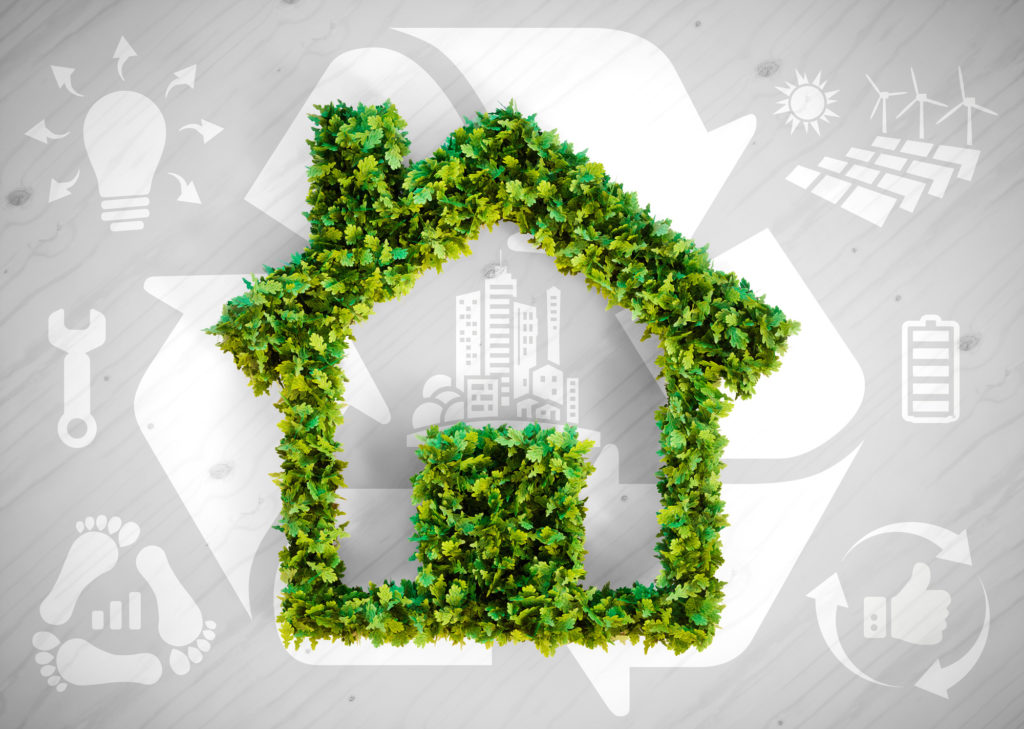
If you’re concerned about the negative impact that our modern life has on the environment, you’ve probably already taken steps to lessen your carbon footprint.
Things like bringing your own reusable grocery bags, buying a hybrid car, keeping your showers on the short side to save water, and composting your kitchen scraps, are all great ways to give back to Mother Earth.
What’s more, steps like these generally go easy on your budget, as well. Win-win! Are you interested in learning more cool hacks to create an eco-friendly house? Read on for seven next-level ideas.
7 Hacks To Make Your House Eco-Friendly
You probably already know the importance of buying Energy Star-certified appliances, setting your HVAC system on a timer, and switching to CFL light bulbs. That’s why we’ve focused on lesser-known hacks that benefit the environment.
1. Make Your Own Cleaning Products
The next time you use up that all-purpose cleaner or stain remover, don’t just throw the spray bottle into your recycling bin and buy another. Instead, save the bottle and make your own replacement.
If you have white vinegar and baking soda in your cupboards, you are already equipped to clean your home. Add in a few drops of essential oil to boost the cleaning properties and/or make your home smell great.
Already make your own all-purpose spray cleaner or window cleaner? Good for you! Now step up your game by making dishwasher detergent tabs, laundry detergent, air freshener, or fabric softener.
These products will work just as well, if not better than, their commercial counterparts. And they will cost you just pennies on the dollar!
2. Do Away With Single-Use Kitchen Items
Unless you’re already committed to a super-green lifestyle, chances are your kitchen is the most eco-unfriendly room in your house. Luckily, it’s also incredibly easy to eliminate single-use products.
Whenever you use a paper towel or length of cling wrap, ask yourself if you can do without it. Store food in glass containers like mason jars or pyrex bowls. Try reusable alternatives to foil and plastic wrap.
Take your own mesh produce bags to the store instead of using the plastic ones provided. Ditch disposable straws and sandwich bags. If you use plastic storage bags, rinse them out and reuse them.
3. Use it Up, Wear It Out
Ever heard the expression “use it up, wear it out, make it do, or do without”? It dates back to World War I, but really became words to live by during the Depression and WWII.
Today, a new generation of frugal and eco-conscious homemakers have adopted this time-honored motto, in part as a response to the planned obsolescence that characterizes our consumer culture.
Cut up worn or stained clothing to use as rags. Repurpose food jars and tins to store small items. Learn how to fix small appliances rather than buying new ones. Buy clothes secondhand, either from a thrift store, eBay, or online consignment shops like ThreadUp.
In short, get into the habit of asking yourself if the item you’re about to discard could have another use. It might feel miserly at first, but pretty soon you’ll be challenging yourself to come up with creative new ways to give things a second life.
4. Consider Solar Solutions
Solar power is gaining ground in residential homes, and for good reason. It can not only reduce or even eliminate your electricity bills, but it can actually help earn you money, if you generate enough power to sell some back to the grid.
Solar roof panels or freestanding solar panels improve your home’s value and may pay off big-time if you ever decide to sell your home. And, of course, there’s no denying the environmental benefits of relying on this near-infinite power source rather than using fossil fuels to run your home.
If you’re in the market for a new roof, consider solar roof solutions, like the ones provided by this company.
5. Grow Your Own
Herbs are expensive, and how many times have you needed half a bunch of cilantro or just a few sprigs of mint, only to let the remainder wither away in your refrigerator?
Growing your own herbs could not be any simpler. You don’t need a green thumb or a huge plot of land, either. A kitchen windowsill brimming with small pots or planters is a beautiful thing.
The same goes for vegetables and fruits. Container gardening or hydroponic gardening are perfect for people who live in apartments, homes without yards, or inhospitable climates.
Having a variety of herbs and other small-scale “crops” on hand will not only reduce your carbon footprint and improve your diet, it will save you a substantial amount of money.
6. Embrace the Phrase “From Scratch”
Similarly, think about the food items you routinely purchase from the store. Chances are you buy bread, granola, yogurt, cookies, cakes, pasta sauce, or pizza crust. All of these can easily and inexpensively be made from scratch.
If your family eats a lot of bread, you may want to invest in a bread maker (protip: check thrift stores and Craigslist before buying a brand new one) to simplify the process.
We are often willing to pay more for convenience items, but is it honestly that much more convenient to make brownies from a mix than to measure out four or five ingredients? Once again, you can make these foodstuffs for much less money than the “store-bought” version, and they will likely taste better, too.
7. Shop Local
When it comes to food that you can’t grow or make yourself, try to buy it locally. This supports local farmers and small businesses. It will also reduce the environmental impact of large-scale farming, trucking items to distant destinations, and the packaging that’s necessary to transport fresh food.
Visit the farmer’s market, where you can deal directly with the people who work hard to grow what you eat. Better still, invest in a CSA (community supported agriculture) share, which may ask you for volunteer time on the farm.
Both are great ways to get the freshest possible produce and other goods — and feel good about helping the local economy.
Wrapping Up
Turning your home into an eco-friendly house is a process, and not something you can achieve overnight. However, there are many small steps you can take to reduce your carbon footprint and minimize the impact you make on our planet. Some of our hacks are fun, many are frugal, and all will help you become more ecologically minded.
Want more inspiration for healthy, happy living? Check our blog regularly for new posts!

